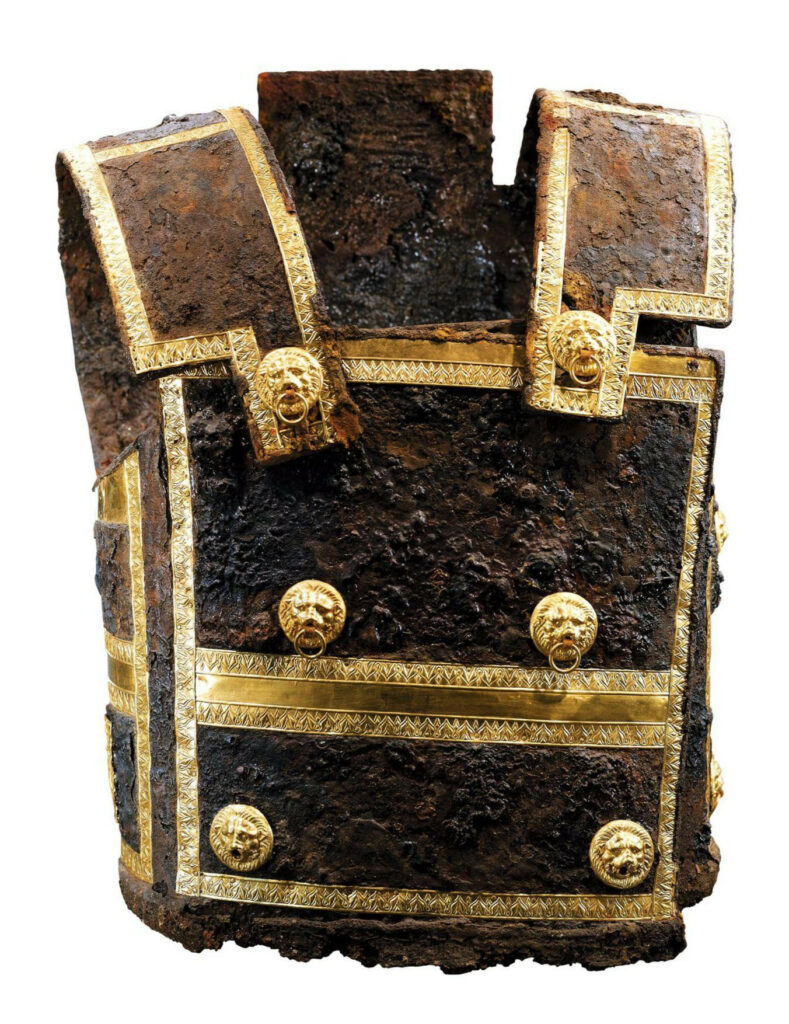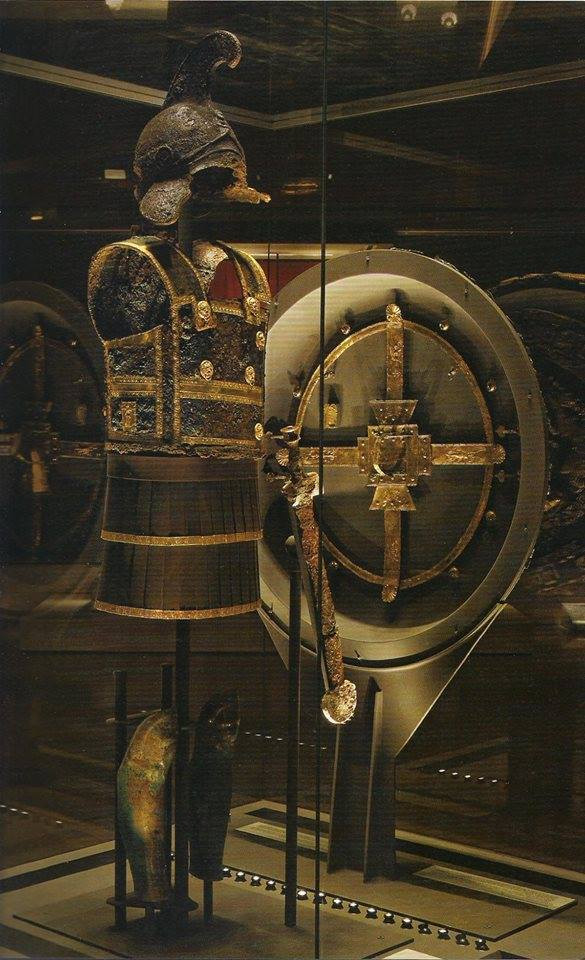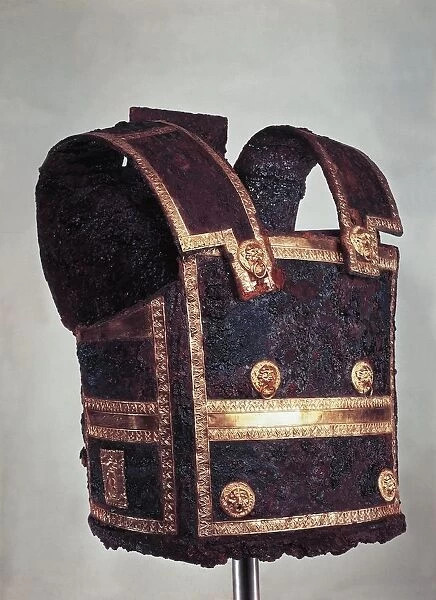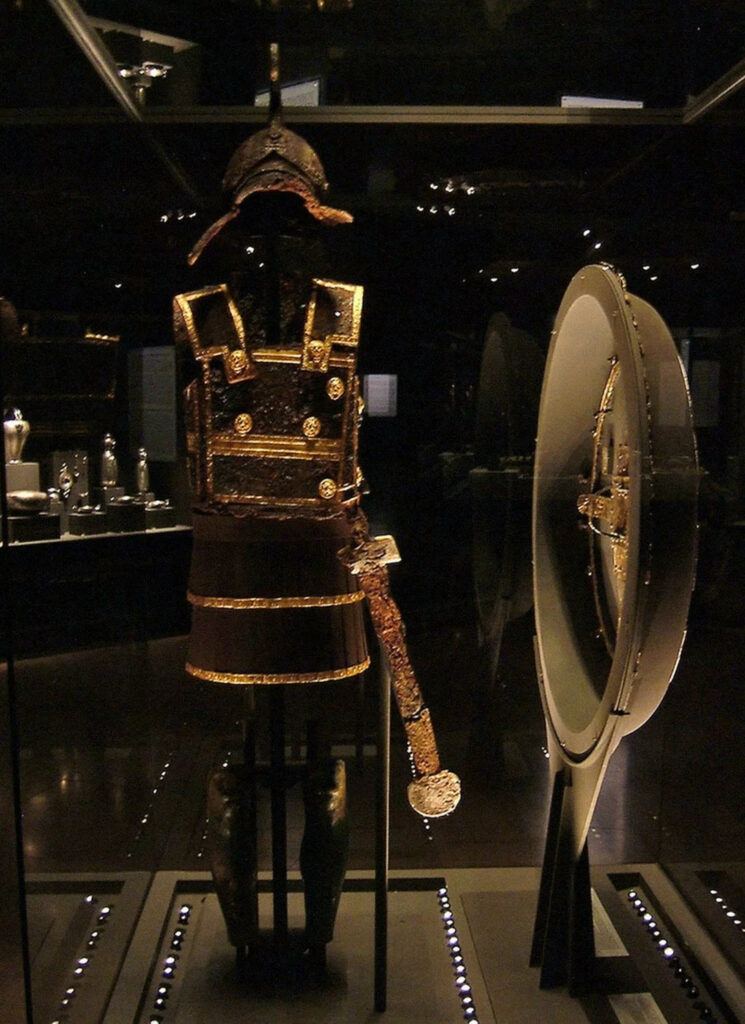The Warrior King’s Armor: A Symbol of Power and Prestige

In the annals of ancient history, few artifacts capture the imagination quite like the iron and gold cuirass of Philip II of Macedonia. This stunning piece of armor, dating back to the 4th century BC, tells a story of power, innovation, and the birth of an empire.
A Father’s Legacy: Forging the Path for Alexander the Great
Before Alexander the Great became a legend, his father Philip II was shaping the destiny of Macedonia. A brilliant strategist and visionary leader, Philip transformed his kingdom into a formidable power through military reforms and calculated conquests.
The Cuirass: Where Strength Meets Splendor

Philip’s iron and gold cuirass perfectly embodies the dual nature of his reign. The iron core represents the military might that secured his throne, while the golden adornments reflect the wealth and sophistication of his court. This masterpiece of ancient craftsmanship served not only as battle armor but as a powerful symbol of Macedonian royalty.
From Iron to Empire: Philip’s Enduring Impact
Revolutionizing Warfare: The Macedonian Phalanx

Philip II’s military innovations, including the famous Macedonian phalanx formation, laid the groundwork for his son’s future conquests. His strategic genius extended beyond the battlefield, as he deftly used diplomacy to expand Macedonian influence across Greece.
A Father’s Gift: The Seeds of Alexander’s Ambition

The iron and gold cuirass stands as a testament to the legacy Philip II passed on to Alexander. More than just a kingdom, Philip bequeathed to his son a vision of unity and conquest that would reshape the ancient world.

As we marvel at this ancient armor, we’re reminded of a time when the ambitions of one man could change the course of history. Philip II’s iron and gold cuirass is more than a relic—it’s a golden thread connecting us to the birth of one of history’s greatest empires.
